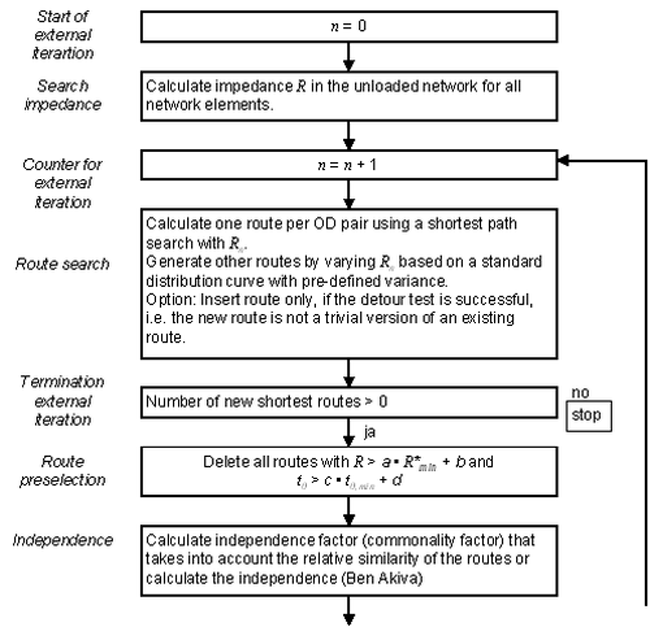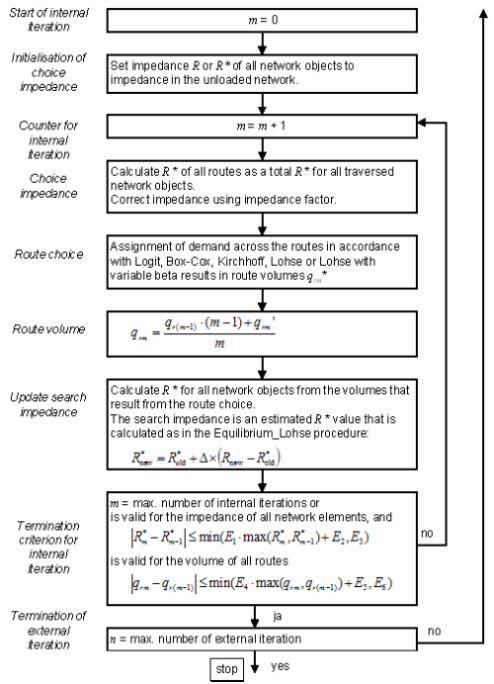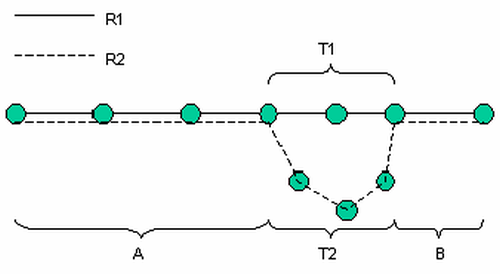The procedure is broken down into an external and an internal iteration (Illustration 107).
- The external (global) iteration with iterator n is used for the route search. This loop is repeated until either n = N or until no new shortest routes are found.
- The internal iteration with iterator m is used to assign the volume to the routes. This loop is repeated until either m = M or until the deviations of the impedances on the network elements and the deviation of the volumes on the routes between two iteration steps is very small.


Illustration 107: The procedure of stochastic assignment
The alternative route search by stochastic variation of the impedances is closely related to other procedures used to determine k-shortest paths and shares their common drawback that often new routes are found that differ insignificantly from previous routes. Such routes are not desirable as they hardly change the volume situation in the network and only increase the route quantity, which leads to extended computing time and higher memory requirements. For this reason a detour test is offered as part of the stochastic assignment that discards a route r2 if a route r1 already exists that matchesr2, with the exception of a subsection, and if this subsection in r2 is significantly longer than in r1. More precisely, r2 is discarded in favor of r1 if the following applies (Illustration 108):
- r1 = AT1B
- r2 = AT2B
- RunTime(T2) > factor • RunTime(T1)+ summand

Illustration 108: Discarding routes
The route sections A and B can be empty if the subsection is at the start or the end of the routes.
If there are evaluations on the path level, i.e. if in addition to the smoothed general impedance of the transport system an impedance term on the path level is defined for a demand segment, the detour test is modified. This is because the mesh avoids a determining link of the path for the evaluation, but is still of interest. If according to detour test results a path is subordinate, both paths on the path level must be evaluated, including sections A and B. If the subordinate path has the better path evaluation in terms of at least one coefficient set, it is maintained. Coefficient sets are used to generate multiple different paths. As the additional impedance term is defined per demand segment, this part of the test is also performed per demand segment.
The impedance from the properties of the path is an element of the route choice, yet not of the search. Therefore, an attempt should be made to keep the definition of the search impedance as completely as possible and only to use elements on the level of paths if they are defined on the basis of the route leg set.

